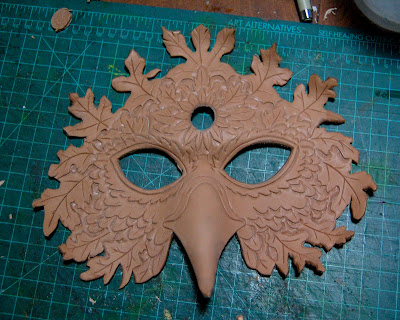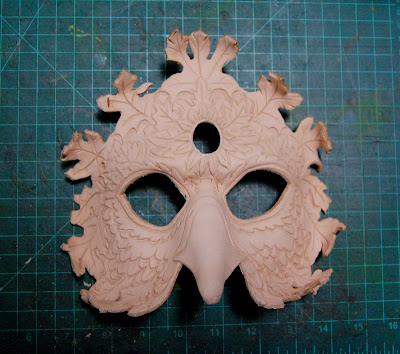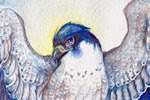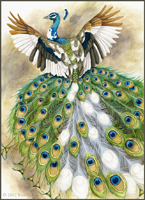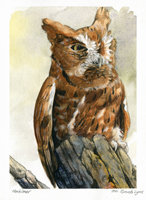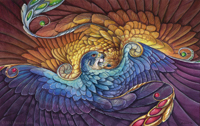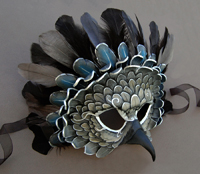Sketch
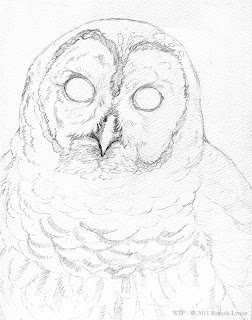
Omar was described to always be looking at his handler, or whomever was speaking to him. The client explained that it was strange seeing photos of him from the side, because she usually only saw him from the front. This is why I chose to paint him from the front, to show him in a way everyone was familiar with - looking right at you. Two of Omar's personal characteristics include a diamond shape on his forehead, and the right side of his facial disk is higher than the left.
Basic Shadows
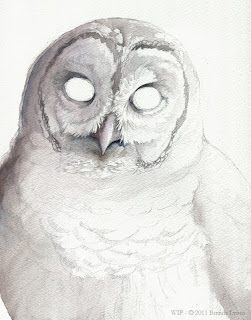
At this phase, I wanted to establish where the light would be coming from. I felt a dramatic light from the side would be much more interesting than a more global light. I used a combination of sepia, payne's gray, and dioxazine violet.
Markings and Deeper Shadow
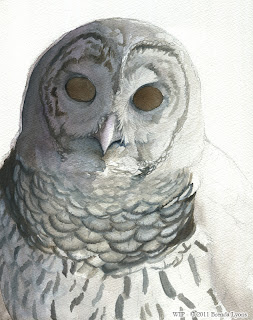
Barred owls are a bit complex in their markings, although one wouldn't think it compared to barn owls and great horned owls. However, their chest feathers vary from vertical bars to horizontal - these markings are what gave the barred owl its name. In addition, the texture of the belly feathers are different than those on the chest. Painting these correctly are essential to capturing the appearance of the barred owl.
Here, I deepen the shadows and just barely begin the detail on the belly. I also put in a flat shade of brown for the eyes, which I will darken and add highlights to later. Note how the texture of the feathers differ from the tiny feathers beneath the beak, to the long, slender feathers around the beak, to the scalloped feathers on the chest. Feathers change depending on the location of the bird - the tiny feathers around the eyes would look abnormal on the chest, and vice versa. The chest at this point looks unusual because it has the most detail so far - once I begin work on the surrounding areas, the painting will start to come together as a whole.
The next post will show the next steps, and most likely include the finished painting.

























